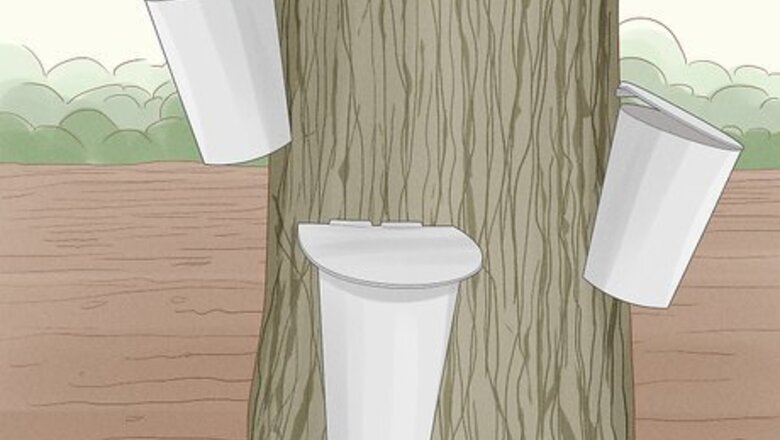
views
Tapping the Trees
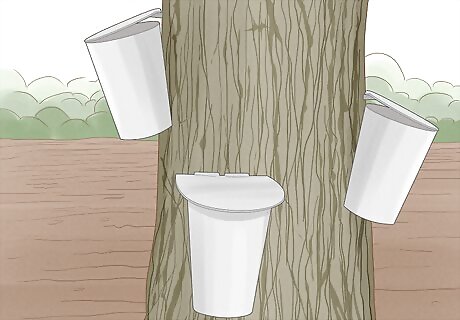
Make sure your trees are ready to be tapped. Maple season occurs during the spring when nights are below 32 degrees Fahrenheit (0 degrees Celsius) and days are starting to get warm. This causes the sap to start flowing in trees. The maple season is over when this temperature pattern ends. At this time the color of the sap will become darker. If sap is collected after the season is over it will be low in sugar content and have an undesirable taste.
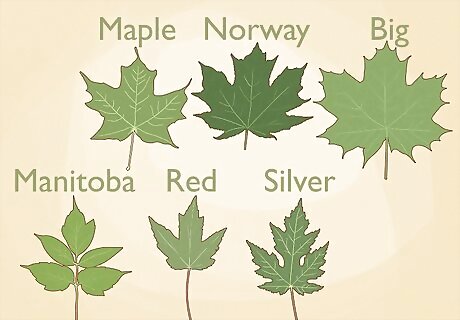
Select trees. There are many different types of Maple trees. Various types have different sugar content; the higher the better. The Sugar Maple has the highest sugar content. The maple tree has a distinct five point leaf. Typically, a tree should be at least 10 inches in diameter before it is tapped.
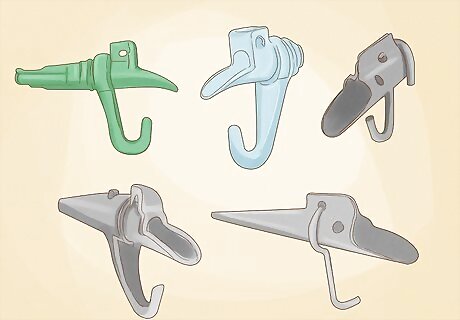
Purchase taps. These are also known as spiles. Online is the easiest place to buy taps. Most taps are the same, but the collection containers differ quite a bit. Determine what style of collection container you will use: a bag, an attached bucket, a ground bucket, or a tube network (usually used by advanced syrup-makers). If you don't feel like buying a bucket, a clean milk jug will work fine. Avoid buying and installing a tube network if you haven't tapped before.
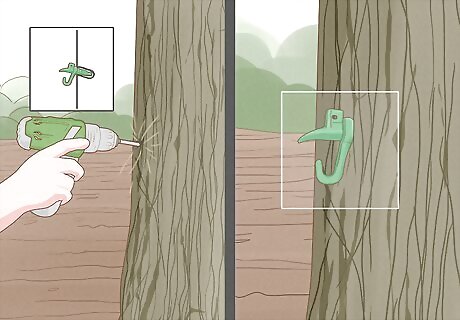
Tap the tree. Drill a hole on the side of the tree that receives the most light, above a large root or under a large branch. The hole should be the size of your tap. It should also be around 1 to 4 feet (30 to 120 cm) above the ground and a 1/2 inch (1.25 cm) longer than your tap. The hole should be at a slight upward angle. An electric hand drill works well for this task. You could also drill a hole using a hammer and a long nail; hammer it in, then remove it.
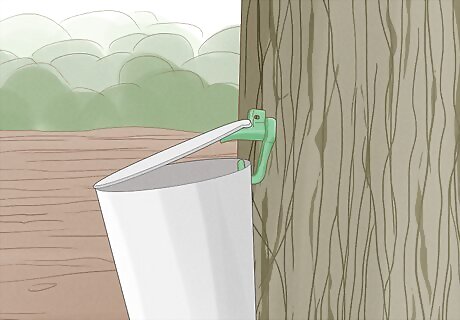
Attach a collection container. It is best to cover containers to keep out rainwater and bugs.
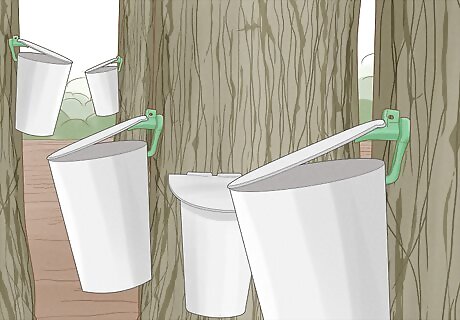
Tap more trees. 40 gallons of sap makes just one gallon of syrup, which is why store-bought maple syrup is so expensive. A good number of trees to tap for a beginner is 7 to 10; you'll get about 10 gallons from each tree per season, so you'll end up with a few gallons of maple syrup.
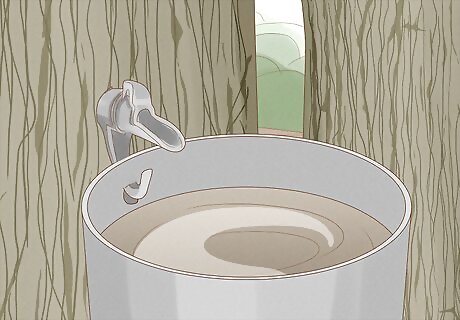
Collect the sap. Over the course of a few weeks, check the collecting containers every few days. Transfer the sap to sealed buckets or other large containers for storage. Keep collecting sap until the season has ended. Now you're ready to turn the sap into syrup.
Boiling the Sap
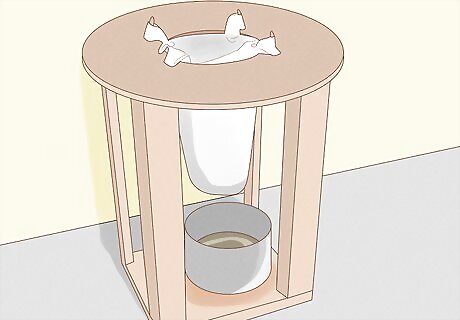
Filter the sap. If you have a smaller amount of sap, this is easiest done with a coffee filter. This is only to remove any sediment, bugs, or twigs from the sap. You could also reach in and remove large pieces of debris with a slotted spoon. The sap will be filtered again later, after it's boiled.
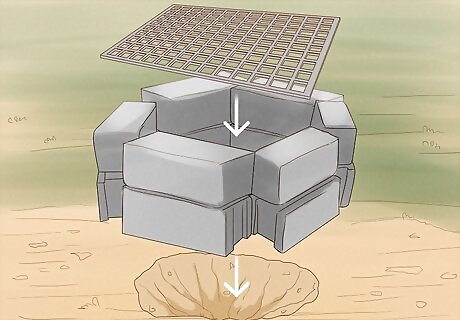
Build a fire to boil the sap. Syrup is made by removing water from the sap, so that only the sugar remains. Sap contains only about 2 % sugar. You can use an evaporator, which is a machine made specifically for boiling sap into syrup, or a less expensive alternative like a good, hot fire (you can also boil it in a pan on the stove, but you're evaporating so much moisture that your whole house will fill with steam). To build an outdoor fire for sap boiling, follow these steps: Get one or more 5 gallon pots. Dig a shallow hole in the ground where you want to build the fire. Build a box out of cinder blocks around the hole. It need only be large enough to accommodate all of your pots. Set a fire grate in the box to hold the pots, leaving enough space below the grate to build a fire. Build a fire under the grate so it will heat the pots.
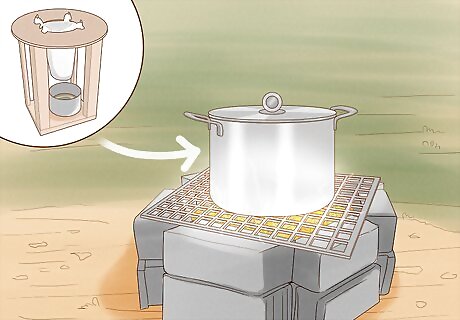
Add sap to the pots. Fill them about 3/4 full of sap. The flames should lick the bottom of the pans and bring the sap to a boil. As the water evaporates, slowly add more sap. Continue stoking the fire and adding sap to the pots until the pots are half full with the remaining sap. The process of boiling sap down to syrup takes many hours, and you can't take any breaks or you'll end up with burned maple syrup. The fire needs to be hot enough to keep the sap boiling constantly, and you need to keep adding more sap when the liquid gets low - even if it means staying up all night. You can hang a coffee can with a handle over the sap pot. Cut a hole in the bottom so the sap trickles out gradually. This way you won't have to be there to monitor its progress at all times.
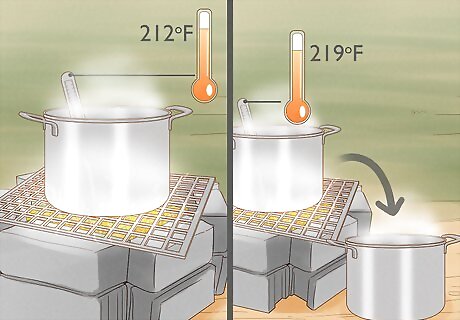
Check the temperature. When you're finished adding sap and the remaining liquid starts to get low, use a candy thermometer to check the temperature. It will have rested at 212 degrees Fahrenheit or so during the boiling process, but once most of the water has evaporated, the temperature will rise. Remove the liquid from heat when it reaches 219 degrees Fahrenheit. If you remove the syrup too late, it will thicken or burn, so make sure you monitor it closely. You can finish the syrup inside if you want to be able to control the heat and temperature more closely.
Finishing the Syrup
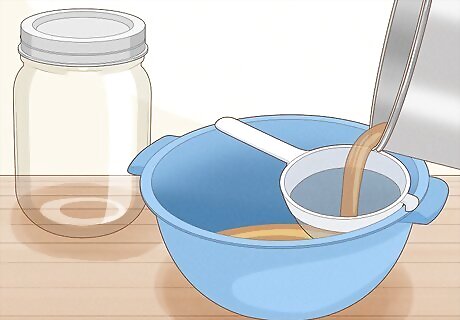
Filter the finished syrup. When the sap is boiled it produces niter, or "sugar sand." The niter will settle to the bottom if not filtered. Filtering will remove niter and other substrate that might have gotten into the syrup, like ash from the fire or bugs that flew in. Place a few pieces of cheesecloth over a large bowl and pour the syrup in; you may have to do this a few times to get all the niter out. Filter the syrup while it's still quite hot, or else it will stick to the cheesecloth. Special cotton filters made to absorb less syrup are available for sale online.
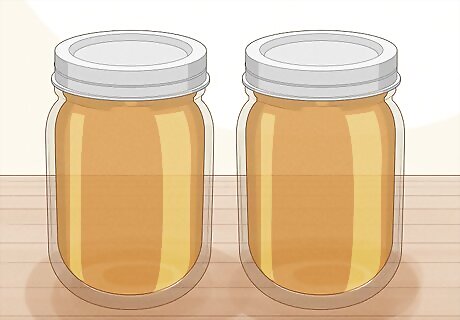
Pour the syrup into sterilized containers. Glass mason jars work well, or you could reuse old maple syrup containers that have been boiled. Put the lids on the syrup jars immediately.
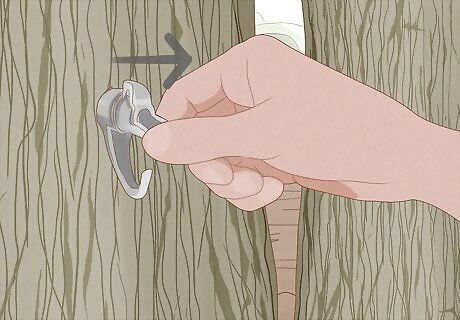
Remove taps from trees at the end of the season. Do not plug the holes; they will close by themselves.


















Comments
0 comment